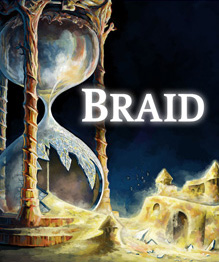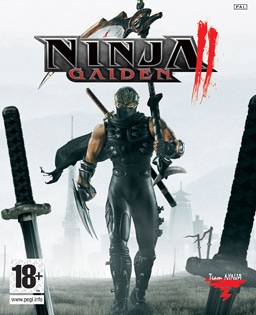
Wario Land : Shake It!! : A 2D platformer based on the gimmick that the main character can shake any object he can grasp, effectively making it a knockoff of…

Mischief Makers : A 2D platformer based on the gimmick that the main character can shake any object she can grasp. Except the shaking aspect is better implemented, and it’s a good deal more easy on the wrists since you’re just mindlessly pressing buttons to shake instead of the whole damn controller. But I won’t waste too much time crying about one game ripping off another long forgotten game of years past. After all, everyone was quick to forgive Bioshock for the same thing.
Story : I feel like we’ve been through this before; Wario’s greed finds himself traveling into an alternate world. Except that this world is referred to as the SHAKE kingdom and the villain is the SHAKE king, who’s kidnapped a princess, as well as the economy-shattering infinite coin bag. I shouldn’t cry “unoriginal!” at a game like this knowing that this game isn’t exactly marketed towards a scholar audience (not that I’m a scholar) but a shred of originality would be nice, considering this is I believe the sixth Wario platformer to date.
The very first thing I noticed about Wario Land : Shake It is that the graphics are incredible.
I’m serious here. I can’t remember the last game to completely leave my jaw at the floor the way that this game did. And as far as I can remember, I’ve never made graphics a major point of discussion in any review I’ve done. I probably won’t when I review Gears of War 2 or Far Cry 2 or the Xbox port of Metal Gear Solid 5 (I can dream, right?) Today’s games aren’t looking particularly better than the ones of last year, or the year before that, and games like Call of Duty 4 and Star Wars : The Force Unleashed seem to be getting all too close to that uncanny valley where visual imperfections stand out more than impressive feats.
On the opposite end of the spectrum, Wario Land on the Wii (the Wii of all systems!!!) is the best looking 2D game I can recall, and this is coming from the self-admitted Guilty Gear fanatic. The characters and especially Wario look and animate crisply and fluidly. The character sprites come off as more like cartoon characters than…well, sprites. This must’ve been what people in the 80s wished games could look like one day after playing Dragon’s Lair and thus I feel like I’m living a long forgotten dream. While the pursuit of cutting-edge realism in video games continues to be sought after amongst game makers, this game proves that the more creative routes can yield satisfying results as well.
The rest of the game, however, feels a bit less ambitious. The gameplay is similar to past Wario Land games (the more traditional sidescrollers, not the ones where Wario was indestructible, which produced some oddly creative puzzles in of themselves) in that Wario shoulder tackles, grabs and throws things and has a cliché butt stomp. The kicker to each level is that at the end, Wario rescues some smurf…thing and needs to run back to the beginning of the stage before a timer runs out. All the while, an alarm signals, and some paths open and close, changing the possible paths home.
Oh, and there will be shaking. Predictably, you will be shaking the Wiimote to shake. Perhaps the developers realized that the Wiimote is so bad at picking up accurate motions that designing a game based on random flailing of the controller would work best.
Most of the Wiimote functionality borrows from the Mario Galaxy idea of subtly throwing mechanics into the stages, like canons or mine-cart unicycles that require tilting and aiming the remote, most of which come across as a novel break from the action as opposed to a nuisance. On the other hand, the SHAKING becomes a bit too frequent. The idea is that Wario, the Nintendo symbol (and perhaps company reflection) of greed, is obliged to shake every money bag he comes across in order to grab the shiny contents.
Maybe in somebody’s mind, this would be a good idea to get kids excited, to watch them shake the remotes with the action, but even this gets a tad annoying after the second and third level. And while one’s first inclination may be to just not shaking these bags and just plow through the levels, but the game really wants you to shake…in fact it won’t let you progress without shaking those bags!
For you see, in order to advance to the next world, you must go to an in-game shop and purchase a map for a large sum, with prices ramping up as you progress. On top of that, money bags and coins in general become harder to find. Unless you very diligently explore every level from top to bottom on each play through, you are not going to find anywhere near enough gold to progress within the game world. Mind you, exploring isn’t a world of fun either, as some areas appear only after that alarm goes off, and I’d like to know who thought it would be a fun idea to make the player try to explore with a time limit.
And even if you make a modest effort to shake every bag that you can think of finding, you just might find yourself grinding. Grinding…in a platformer! That is to say, you’ll replay earlier levels repeatedly to make more money. This slaps the player in the face as a means of artificially lengthening the game. Perhaps the developers were insecure about the game’s length, but Wario Land isn’t at a bad length for a platformer. In fact, it’s actually a longer game than it appears to be, being that the game has a few “hidden” levels that are quite challenging and should’ve been part of the main game. Or perhaps the developers felt that the player should be forced to explore and see all that each individual level has to offer. I don’t really buy that excuse either.
The game throws in several side missions and goals like “finish the second half under a time limit” or “finish the level without getting hurt”, as well as stashing away hidden treasure chests in each level. I like throwing these in as a means of giving the player incentive to replay the levels, but I just wished that they’d be worth something, like gold coin bonuses to give the player an alternate means to buy those blasted maps as opposed to replaying the levels that the player knows where the big coin stashes are over and over again to pay off that $200,000 fine for that final map.
So Wario Land : Shake It(!!?) breaks itself. It hides away its best levels, with the remaining levels being average at best. All the while, it forces the player to revisit those average levels in order to make the gold necessary in order to progress and play more of those average levels. It does feel like a shame that such a visually gorgeous game ultimately went to waste. I guess the potential for a Mischief Makers release on the Virtual Console is always there, but there’s no controller on the Wii that could accurately recreate it. As for anyone that remains curious about the gameplay experience, well just grab a small, long object and shake it for a good half hour. If you’re still amused, you can either buy the game or shake harder until you move on to headbutting the wall repeatedly.
Pros : Some really well-done boss fights. Better than the Wario Gamecube game (which, ironically, was made by the same developer as Mischief Makers)
Cons : Ho-hum music. And the game wants you to unlock these music tracks.
3 stars
The first rule of Project Mayhem is that you do not ask questions about Project Mayhem.













